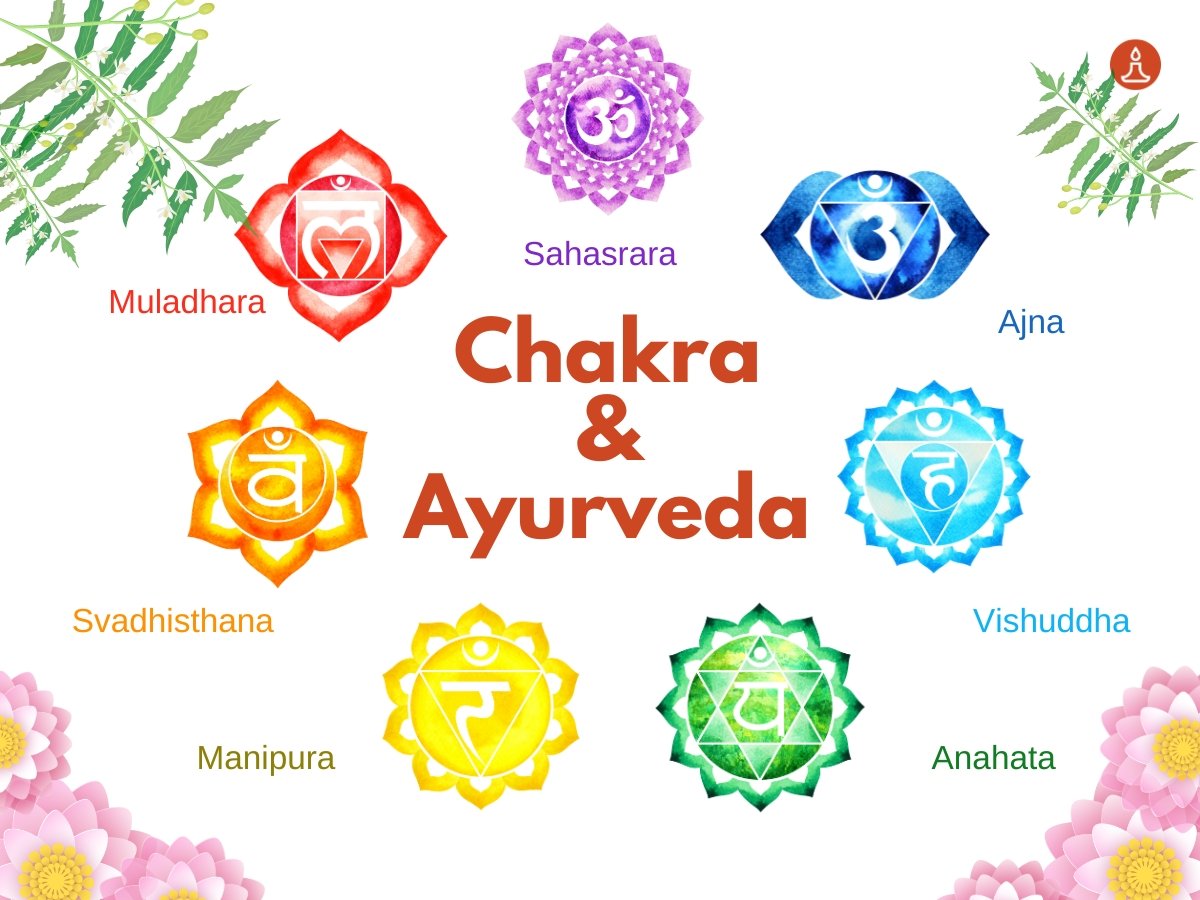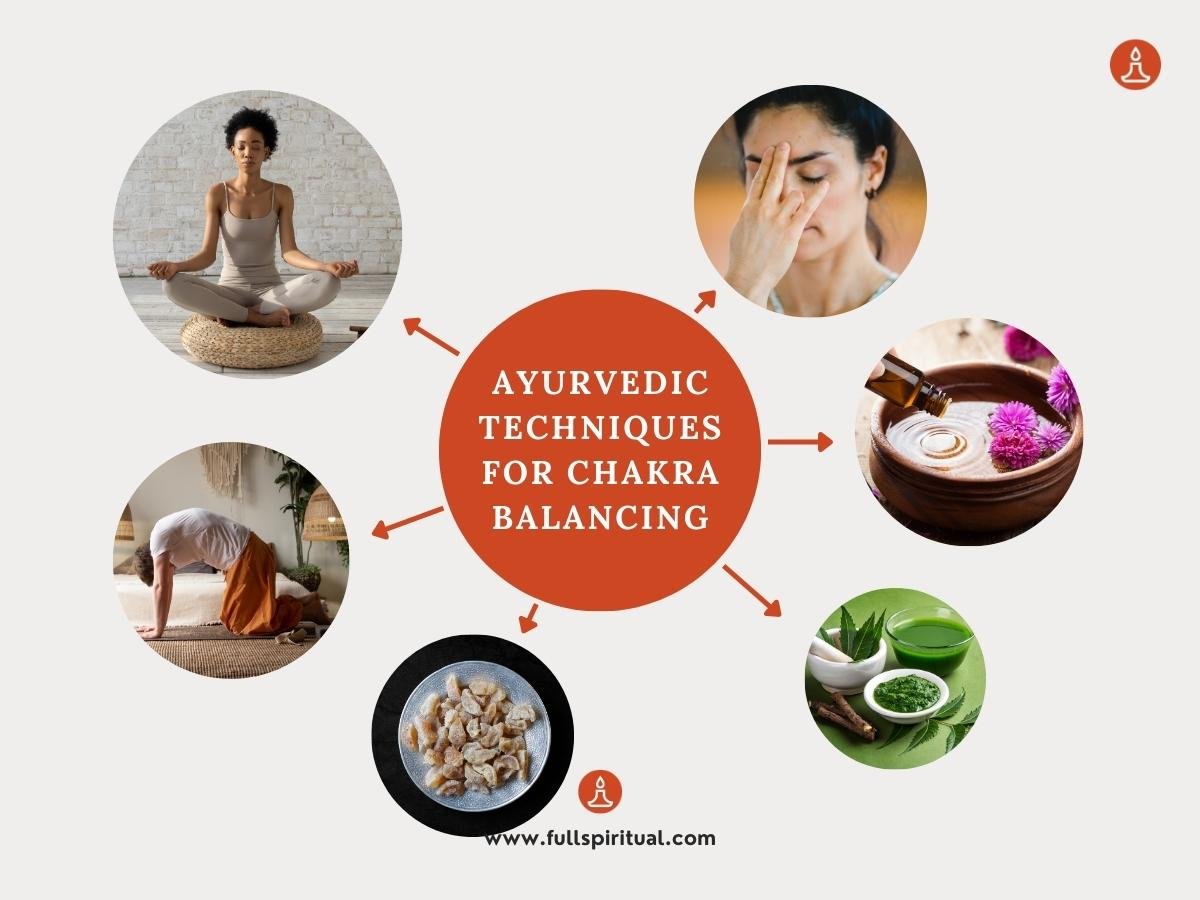Ayurveda is an ancient Indian practice that aims to achieve overall well-being by balancing the mind, body, and spirit. One aspect of Ayurveda that has gained popularity in recent years is its connection to the chakra system. Chakras are energy centers located along the spine, from the base of the spine to the crown of the head. Each chakra is associated with specific qualities and characteristics, and when these chakras are stabilized and harmonized, it is believed to promote optimal health and vitality.
Table of Contents
What are Chakras?

Understanding the concept of chakras
Chakras, derived from the Sanskrit word meaning “wheel,” are energy centers within the subtle body. Although we can’t see or touch them, they are believed to exist and play an important role in our overall well-being. There are seven main chakras, each located at various points along the spine.
Ayurvedic perspective on chakras
In this, chakras are seen as vital energy centers that influence our physical, mental, emotional, and spiritual well-being. Stabilizing the chakras is considered essential for maintaining overall health and harmony in the body.
How are chakras related to the physical body?
Each chakra is associated with specific body parts and glands. For example, the root chakra, located at the base of the spine, is associated with the adrenal glands and governs our sense of stability and security. The heart chakra, located in the center of the chest, is green in color and is associated with the thymus gland and represents love, compassion, and emotional well-being. The crown chakra, at the top of the head, is associated with the pituitary gland and is responsible for our connection to spirituality and higher consciousness.
Ayurvedic practices for balancing root chakra (Muladhara)
This suggests several practices to balance the root chakra, known as Muladhara. These include grounding exercises such as walking barefoot on the earth or practicing yoga postures that focus on the lower body. Ayurvedic treatments like oil massages can also be beneficial, as they help calm the mind and bring stability to the root chakra. Using essential oils such as sandalwood or patchouli can further enhance this healing process and strengthen energy flow in the base of the spine.
Ayurvedic practices for balancing sacral chakra (Svadhisthana)
These practices can be used to balance the sacral chakra, known as Svadhisthana. This chakra is associated with emotions, creativity, and sensuality. To stabilize it, one can practice These techniques such as massage with sesame oil, meditation, and using essential oils like jasmine and ylang-ylang. Eating orange-colored foods and incorporating movement through dance or yoga can also help harmonize the energy flow in the sacral chakra.
Ayurvedic practices for balancing solar plexus chakra (Manipura)
These practices for stabilizing the solar plexus chakra, also known as Manipura, include consuming warming and energizing foods such as ginger, turmeric, and black pepper. These spices can stimulate digestion and promote a sense of confidence and empowerment.
Massaging the abdomen with warming oils, like sesame or fennel, can also help restore equilibrium to this chakra. Additionally, engaging in activities that promote self-esteem and personal power, such as yoga poses that activate the core or working on fulfilling personal goals, can be beneficial. Ayurvedic practices for balancing heart chakra (Anahata)
Ayurvedic practices for balancing Heart Chakra(Anahata)
Ayurvedic practices can help balance the heart chakra (Anahata) by focusing on promoting love, compassion, and emotional well-being. One effective practice is through the use of essential oils such as rose, lavender, and bergamot, which can be applied topically or diffused to enhance the flow of energy in the heart area. Another helpful practice is practicing self-compassion and self-love through daily affirmations and positive self-talk.
Ayurveda also emphasizes the importance of a balanced diet, including foods that are nurturing and nourishing for the heart, such as green leafy vegetables, fresh fruits, and heart-healthy fats like avocados and almonds. Additional practices like yoga, meditation, and gentle exercises can also strengthen the heart chakra and promote overall well-being.
Ayurvedic practices for balancing throat chakra (Vishuddha)
These practices can help stabilize the throat chakra, also known as Vishuddha. One effective method is practicing Jala Neti, a nasal cleansing technique using warm saline water. This helps clear any blockages in the nasal and throat passages, promoting better communication and self-expression. Another practice is consuming herbal teas like licorice or chamomile, which soothe the throat and support the chakra’s energy flow. Additionally, chanting mantras like ‘Ham’ can stimulate the throat chakra and promote its balance.
Ayurvedic practices for balancing the third eye chakra (Ajna)
These practices can help balance the third-eye chakra, also known as Ajna. Some of these practices include meditation, pranayama (breathing exercises), and specific yoga poses like child’s pose and down dog. It is believed that these practices can activate and harmonize the third-eye chakra, leading to increased intuition, clarity of thought, and connection to one’s higher self. Additionally, incorporating certain herbs and spices, such as brahmi and gotu kola, into one’s diet can support the overall balance of the third-eye chakra.
Ayurvedic practices for balancing crown chakra (Sahasrara)
This recommends various practices to stabilize the crown chakra, also known as Sahasrara. One technique is through meditation, focusing on the crown chakra and visualizing a vibrant violet or white light. Practicing pranayama or deep breathing exercises helps to cleanse and energize the chakra. Herbs such as gotu kola, Brahmi, and ashwagandha can also be used to support the stabilizing of the crown chakra. A balanced crown chakra promotes spiritual growth, connection, and clarity of thought.
Ayurvedic Techniques for Chakra Balancing

It is an ancient Indian system of medicine, that offers various techniques for balancing a chakra. Here are a few Ayurvedic techniques that can help balance your chakras:
1. Meditation: Regular meditation is an effective way to stabilize the chakras. Select a quiet and peaceful space, sit in a comfortable position, and focus on each chakra individually. Visualize the respective chakra’s color and chant its associated mantra. This practice helps clear any blockages and restores equilibrium.
2. Yoga Asanas: By practicing specific yoga asanas (postures) each chakra corresponds to specific postures that stimulate and activate them.
3. Pranayama: Pranayama or yogic breathing exercises like Alternate Nostril Breathing (Nadi Shodhana) is particularly useful for stabilizing all the chakras. To practice this technique, sit comfortably and close your eyes. Use your right hand to close your right nostril with your thumb and inhale deeply through your left nostril. Then, close your left nostril with your ring finger and exhale through your right nostril. Continue this pattern, inhaling through the left nostril and exhaling through the right, for several rounds.
4. Aromatherapy: Each chakra has specific oil correspondences. For example, lavender or frankincense oil can be used for the crown chakra. You can apply a few drops of the selected oil to a diffuser or dilute it with a carrier oil and gently massage it on the corresponding chakra area.
5. Ayurvedic Diet: Following an Ayurvedic diet that suits your dosha (body constitution) can help balance the chakras. Eat a variety of fresh, whole foods and avoid processed or heavy foods that can negatively impact your energy centers. Incorporate foods that correspond to specific chakras, such as root vegetables for the root chakra or leafy greens for the heart chakra.
Remember, balancing the chakras is an ongoing practice. Consistency and patience are key to maintaining chakra balance. It’s also helpful to consult with an Ayurvedic practitioner or an experienced yoga teacher for personalized guidance.
Integrating Ayurveda and Chakra Balancing
Integrating Ayurveda and Chakra Balancing is a holistic approach that focuses on healing the mind, body, and spirit. Ayurveda emphasizes the importance of individualized approaches based on the Ayurvedic constitution, or dosha, which analyzes the unique characteristics of each person. By aligning the doshas with the chakras, the body’s chakras, balance, and harmony can be restored.
Seeking guidance from Ayurvedic practitioners or chakra healers can provide valuable insights and treatments tailored to one’s individual needs. These experts can assess the imbalance in the doshas and identify any blockages in the chakras. Through the use of herbs, essential oils, dietary adjustments, meditation, and energy healing techniques, these can help release emotional and physical tension, promote overall well-being, and align the body’s energy for optimal health.
According to Ayurveda, the ancient holistic healing system, maintaining stabilizing in all the chakras is crucial for overall well-being. This recognizes the profound connection between These are the vital points within our subtle body. One significant chakra is Anahata, the heart chakra, which plays a vital role in fostering love, compassion, and emotional harmony. this acknowledges the existence of seven chakras, each representing different aspects of our being.
When each chakra is stabilized, it functions like a smoothly rotating wheel, as the Sanskrit term “chakra” literally means “wheel.” Paying attention to the upper chakras is equally important as they are associated with higher consciousness and spiritual growth. By aligning the chakras through Ayurvedic practices, we can cultivate a harmonious and vibrant state of being.
Conclusion
In conclusion, Ayurveda proves to be a powerful tool in balancing our 7 chakras and achieving inner harmony. This ancient holistic approach focuses on bringing harmony and balance to our mind, body, and spirit. By understanding the chakras in our body and applying these principles, we can address imbalances and blockages that may be affecting our overall well-being.
Ayurveda provides techniques such as customized diets, herbal remedies, detoxification practices, yoga, and meditation to help restore balance to our chakras. Through these practices, we can experience physical, emotional, and spiritual healing. Ayurveda teaches us the importance of listening to our bodies and addressing imbalances from a holistic perspective. By adopting these principles into our daily lives, we can embark on a transformative journey toward self-discovery, inner peace, and overall well-being.

